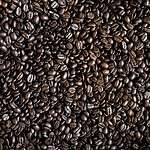Affiliate disclosure: We are reader-supported. This means that we may earn a commission if you buy an item using one of the links. For our reviews, we purchase products ourselves and review them independently. Read more about our methodology.
Summary of Differences
Both AeroPress and French presses make a robust and full-flavored brew, so you can’t go wrong with either choice if that’s how you like your coffee. The main differences are how much you want to brew and whether you want something you can travel with.
AeroPress comes in two sizes. One size can make one standard coffee serving. The larger size can make four standard servings. French presses range in size from single-cup models up to 60 ounces (which is about 12 cups). If you make large batches of coffee, you can find a French press to meet your needs.
If you want a coffeemaker you can take with you, AeroPress is the better choice. It’s travel- and even camping-friendly. It’s compact and sturdy and it comes with all the accessories you need to brew. It’s hugely popular in the camping and backpacking communities for these reasons.
| French press | AeroPress | |
|---|---|---|
| Prices | $20 to $30 for 30-oz model, larger models range up to $60 | $39.95, $49.95, and $79.95 |
| Supplies needed | None | Paper disc filters or reusable filter |
| Sizes offered | Single-cup up to 60 oz | Two sizes: Single-cup and four-cup |
| Other uses |
|
|
| Cleaning | Most models are handwash only | Top-rack dishwasher safe, but rinsing is enough for day-to-day use |
| Materials | Glass, ceramic, or metal. Many models also have plastic pieces | BPA-free plastic and rubber |
| Great for... |
|
|
Key Differences between French Press and AeroPress
A French press and AeroPress use a press and immersion method of brewing coffee. In a French press, you submerge coffee grounds in hot water, let them steep, and press a plunger down to filter the coffee. The plunger contains a metal filter that keeps grounds from getting in your cup.
AeroPress operates similarly. It also has a plunger, but instead of the filter being part of the plunger, the filter is on the bottom of the AeroPress. You add grounds to the AeroPress, submerge them in water for up to 20 seconds while stirring, and then press the plunger down. Pressing the plunger down forces the water through the filter and into your cup.
Both the French press and AeroPress are known for the bold, rich, and full-bodied flavors they produce. What the AeroPress makes is similar to espresso because of the fine grind size and the brewing method. You can add hot water to your brew to make an americano-style drink. Or, you can add milk to make cappuccinos, lattes, or other milk-based drinks. The French press, on the other hand, produces what most people think of as coffee.
Grind Sizes
A French press uses a coarse grind, and an AeroPress generally uses a fine to extra fine grind. A French press uses a coarse grind because you steep the grounds in water for up to seven minutes. A fine grind would produce too intense or bitter of a brew if you let them soak in hot water for that long. Fine grounds might also fit through the holes in the filter in the French press and end up in your cup.
In an AeroPress, the grounds are not in contact with water for very long if you’re brewing using the standard methods (at most 20 seconds for hot brews and one minute for cold brews). This is why AeroPress uses a finer grind. However, the AeroPress can accommodate other grind sizes if you adjust brewing times.
Ease of Use
We believe the French press is more accessible to a newbie, especially if it’s your first foray outside drip coffee makers. There’s not much art to using a French press beyond getting the grind size right and ensuring you submerge the grounds in hot water.
It takes a while to get used to making coffee with the AeroPress. The first time I used it, I had to read through the instructions a few times. It was also more difficult to press than the French press. I was worried about spilling the AeroPress because it sits on a mug. I had to use one hand to stabilize the AeroPress on the cup and then the other hand to press.
French presses come with built-in reusable stainless steel filters. The AeroPress can accommodate a reusable stainless steel filter, but you need to purchase it separately. AeroPress sells reusable filters for $14.95 (or $24.95 for a two-pack).
Cleaning
AeroPress is easier to clean than a French press. For day-to-day use, you can just rinse the filter and plunger. The AeroPress plunger has a rubber end. When you push it down the chamber, it squeegees the inside of the AeroPress clean. That said, AeroPress recommends periodically removing the rubber seal to clean it to preserve its lifespan. The AeroPress is also safe to put on the top rack of the dishwasher.
Most models of French presses are not dishwasher-safe. Grounds can easily get stuck in the filter, so you’ll want to rinse and wash it thoroughly after each use. If you don’t, you may notice an acidic or sour taste in your coffee when you brew next. On occasion, you should take the plunger apart and clean all of the parts. Cleaning the parts helps prevent oil and mineral buildup, which can affect the taste of your coffee.
Traveling and Portability
One area where AeroPress shines is its portability. It’s great for traveling, camping, and backpacking because it’s sturdy and compact. It’s made from plastic and rubber, so it’s not easy to break, even if you’re prone to dropping things. AeroPress even makes a travel-style model called the AeroPress Go, which includes a mug. The AeroPress also comes with different accessories, including a coffee scoop, a stirrer, and in some bundles, a funnel. The AeroPress and its accessories make it your go-to travel companion. Some bundles include a zippered tote bag, so you can easily pack the AeroPress in your luggage.
French press models come in different materials and sizes. Some types are suitable for travel. If you want to travel with a French press, we’d recommend getting a stainless steel model on the smaller side (one to three cups or so). Glass or ceramic models might break in a suitcase or backpack.
Alternative Uses
You can use an AeroPress and a French press to make loose-leaf tea. With a French press, you’ll follow the same steps you would to make coffee but replace the grounds with tea leaves. In an AeroPress, you must brew using the inverted method, which we outline in our brew guide.
Both coffeemakers can make espresso-style and cold-brew-style drinks. The AeroPress is much faster at brewing these than the French press. In an AeroPress, espresso-style drinks take about 20 to 30 seconds to brew. Cold-brew-style drinks take roughly one to two minutes to brew. In a French press, on the other hand, you’ll still have to let the grounds steep longer for espresso-style and cold brew. Most recipes call for around three to four minutes for espresso-style and overnight for cold brew.
Finally, a French press can froth milk in a pinch. Be forewarned: it’s a good arm workout, and the results are not what you’d get from a real milk frother. That said, it works if you have no other options. I don’t know of any way you can froth milk only using an AeroPress (though if someone has a method, please share!).
Sizes and Cost
The AeroPress comes in two sizes: a standard size (the AeroPress Go is the same size as the standard) and an XL. The standard size can make one coffee-sized serving or up to three espresso-sized servings. The XL can make up to 20 ounces or about four coffee-sized servings. The standard size runs at $39.95 or $49.95. The XL costs $79.95. You can purchase filters on the AeroPress website. If you buy in bulk, the filters run as low as $0.02 per filter. As we mentioned above, you can purchase reusable filters from AeroPress.
There are other manufacturers that make AeroPress-style coffeemakers. Some of these are cheaper than AeroPress.
A 30-ounce French press runs about $20 to $30. A larger model, around 50 oz, is roughly double the price. High-end models can run from $50 to over $100. French presses range in size from single-cup up to 60 ounces. They also come in many materials from glass to ceramic to stainless steel. Some brands that make high-quality French presses include Bodum, Espro, and Frieling.
Which One Do We Prefer?
We have both at home. We use our espresso machine and pour-over coffee makers more than our French press and AeroPress. We use them more for two primary reasons. First, I love cappuccinos and lattes, so that’s usually what I make myself at home (I’m very spoiled by our espresso machine). Second, we both prefer a clean, smooth, and mellow taste in our coffee, which is what the pour-over makes.
But that’s just our preference. If you like a decadent, bold flavor, you can’t go wrong with a French press or an AeroPress. We think it’s worth investing in both coffeemakers because they are affordable, make good coffee, and have different uses.
When we have guests, I like to use the French press to make a batch of coffee. It’s easy to make, and people typically like the coffee made in a French press. For the AeroPress, it’s great when we travel. I also enjoy making cold-brew style drinks in it because of the mellow taste.






